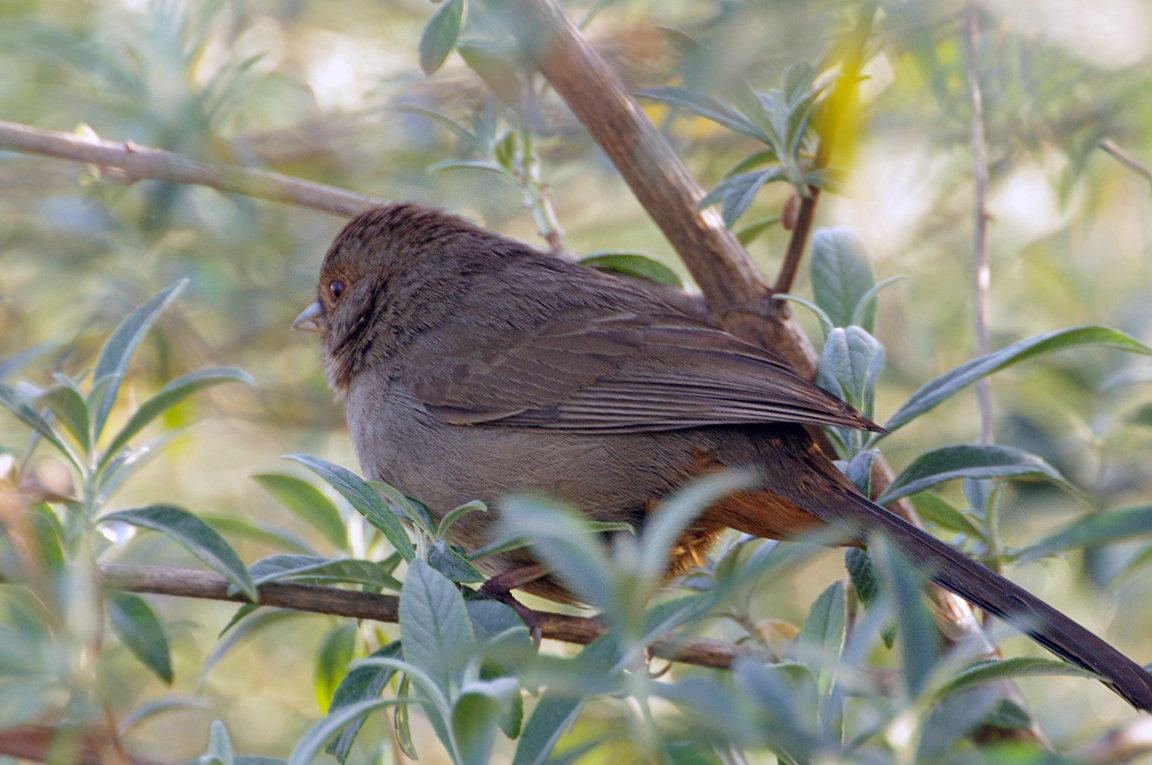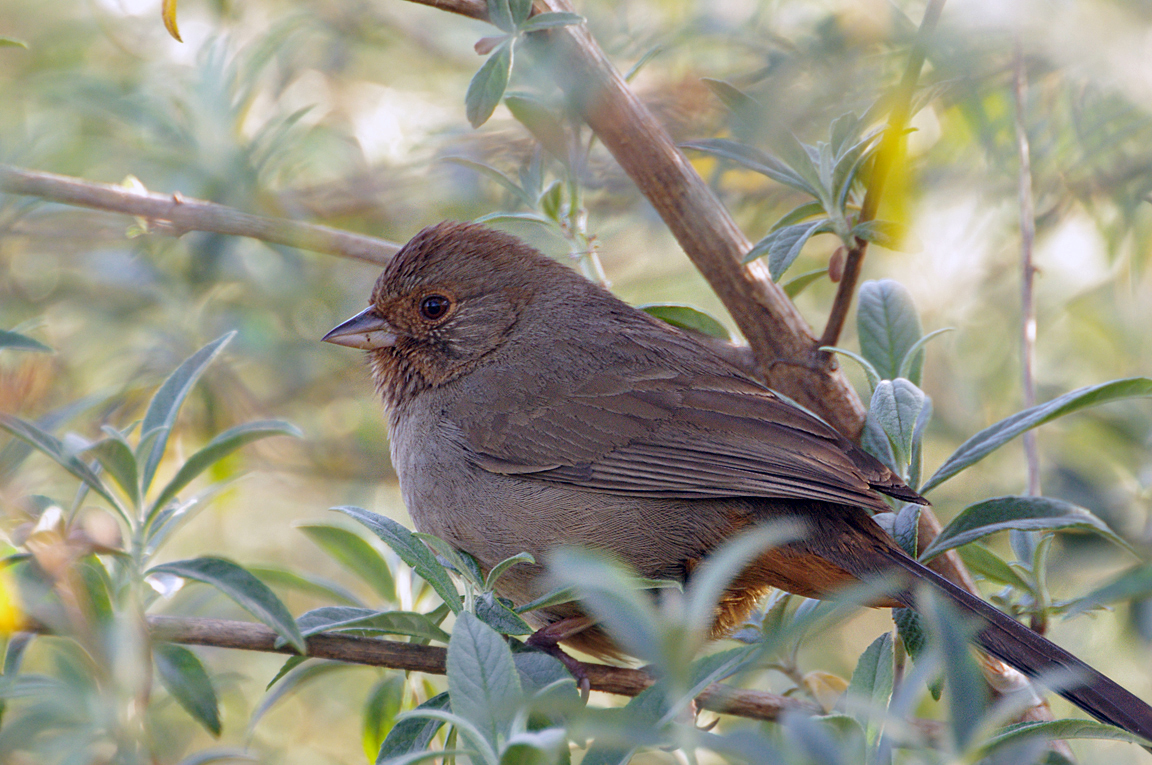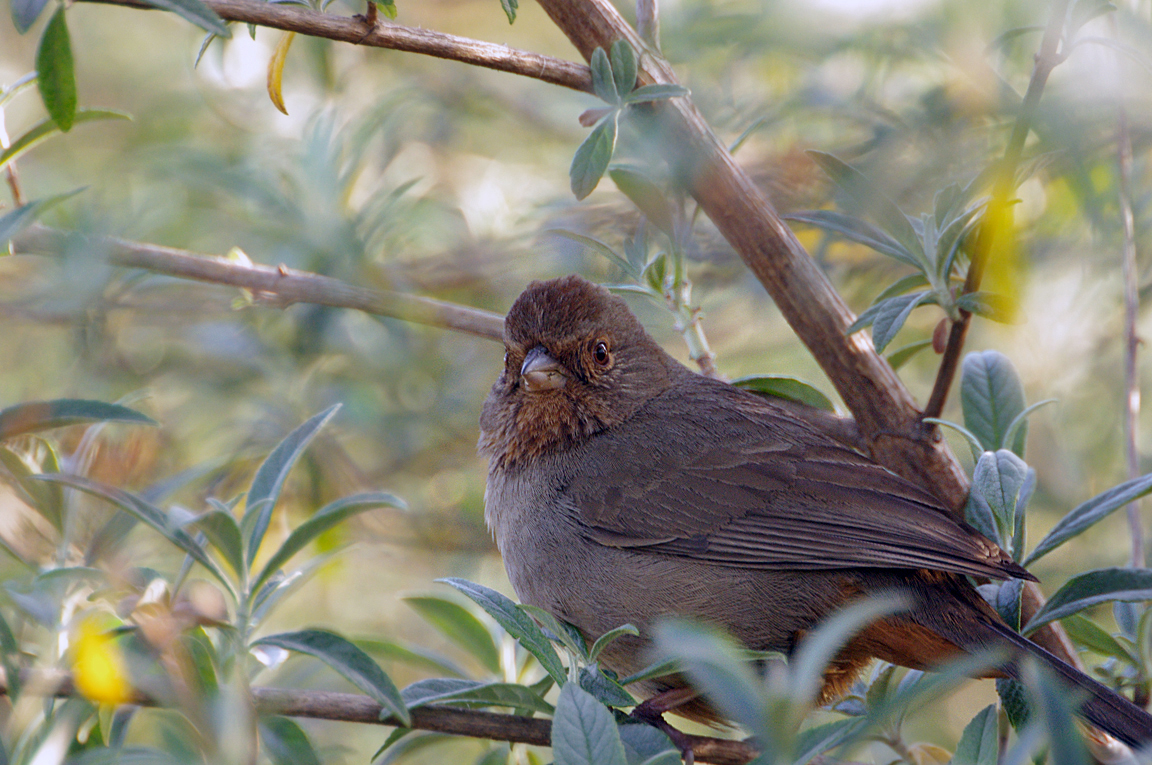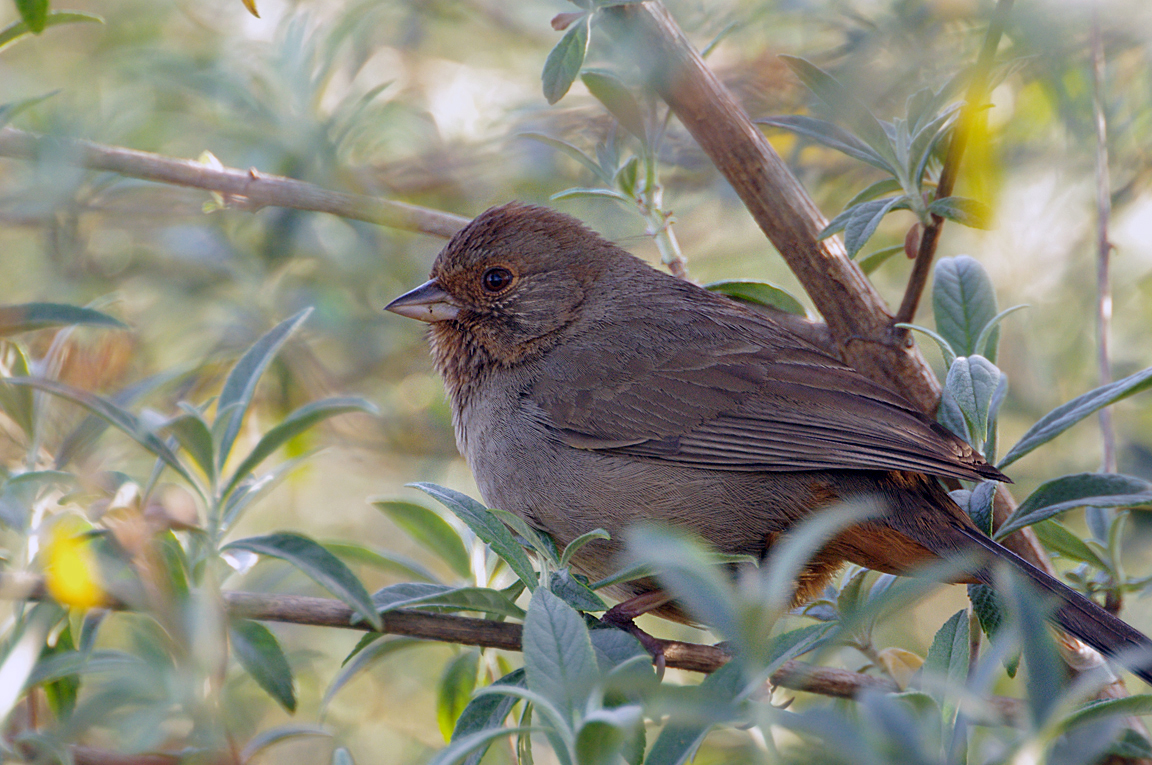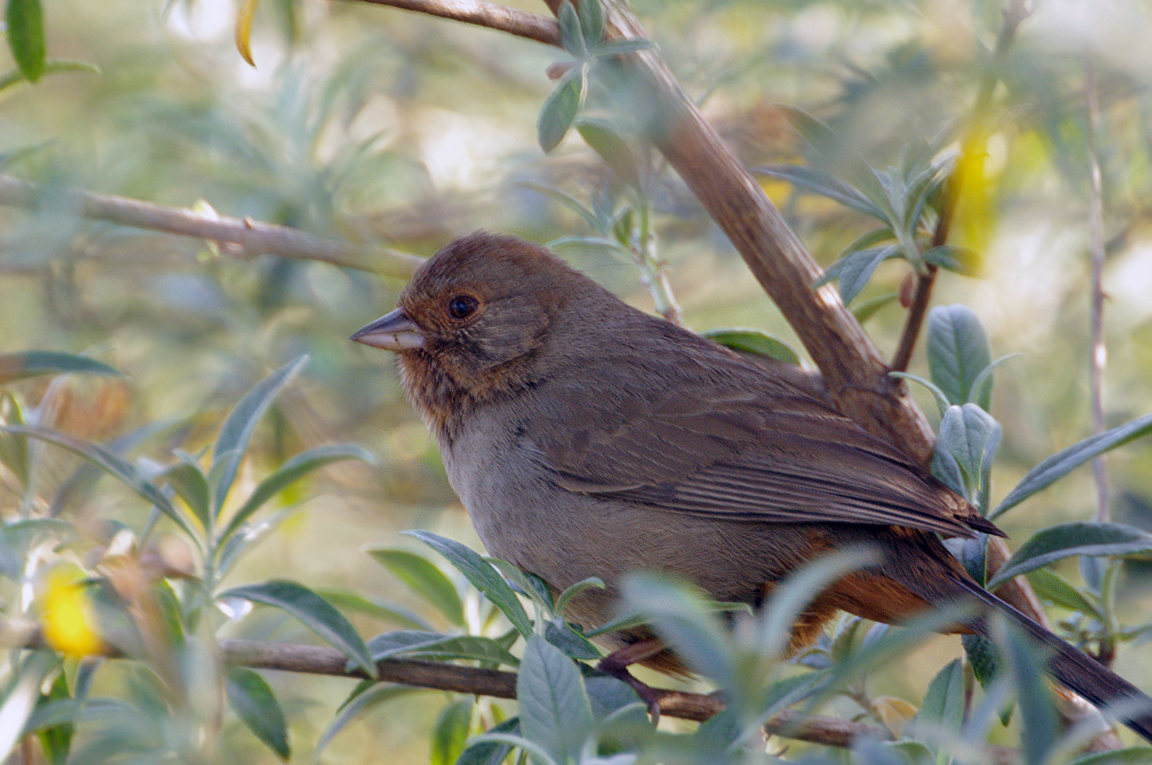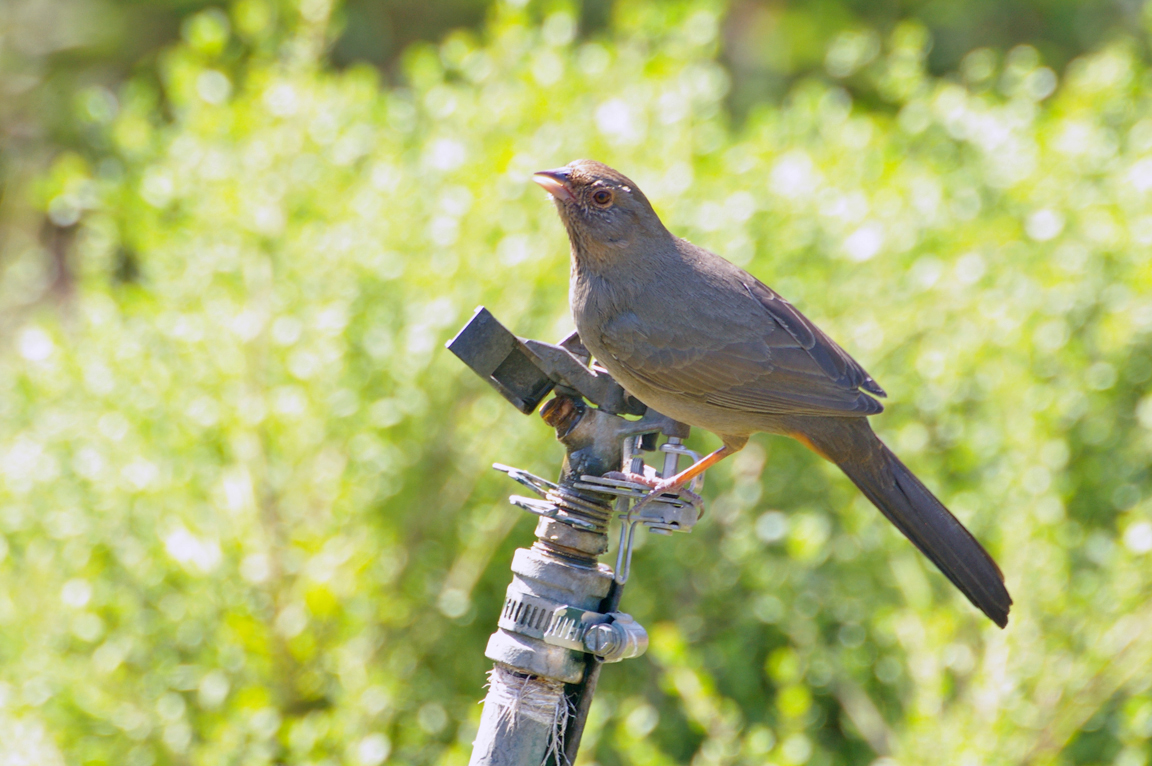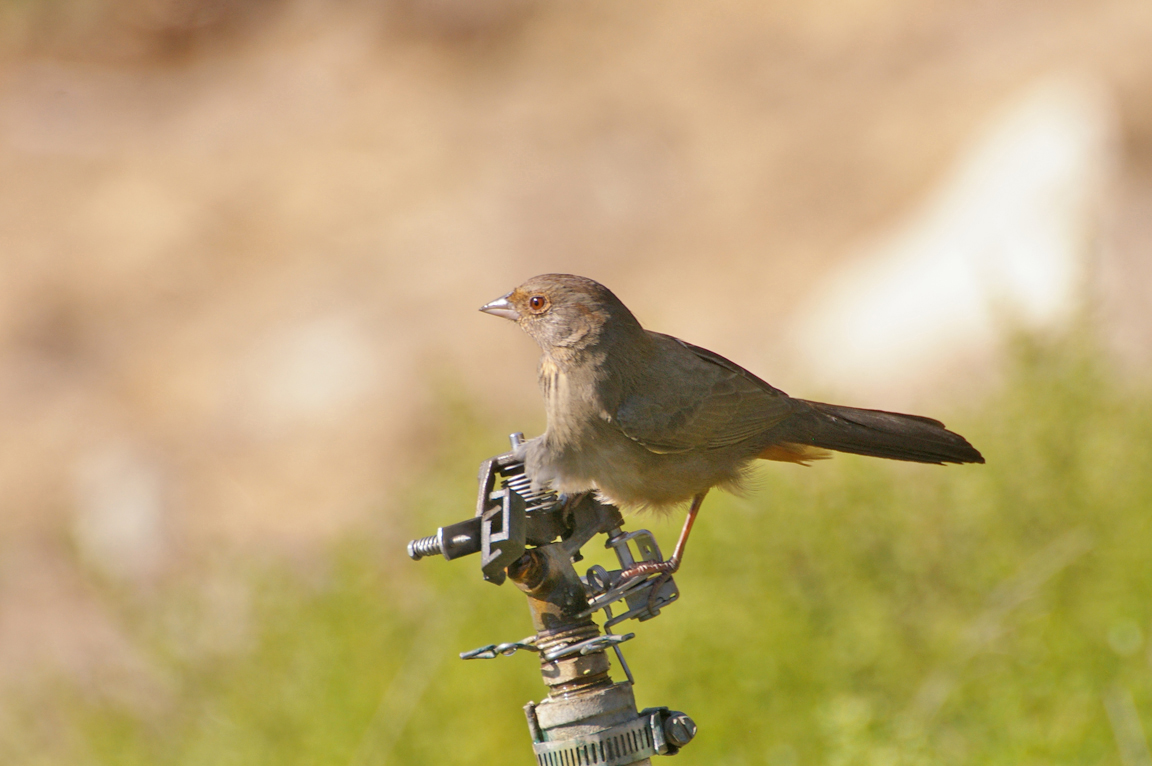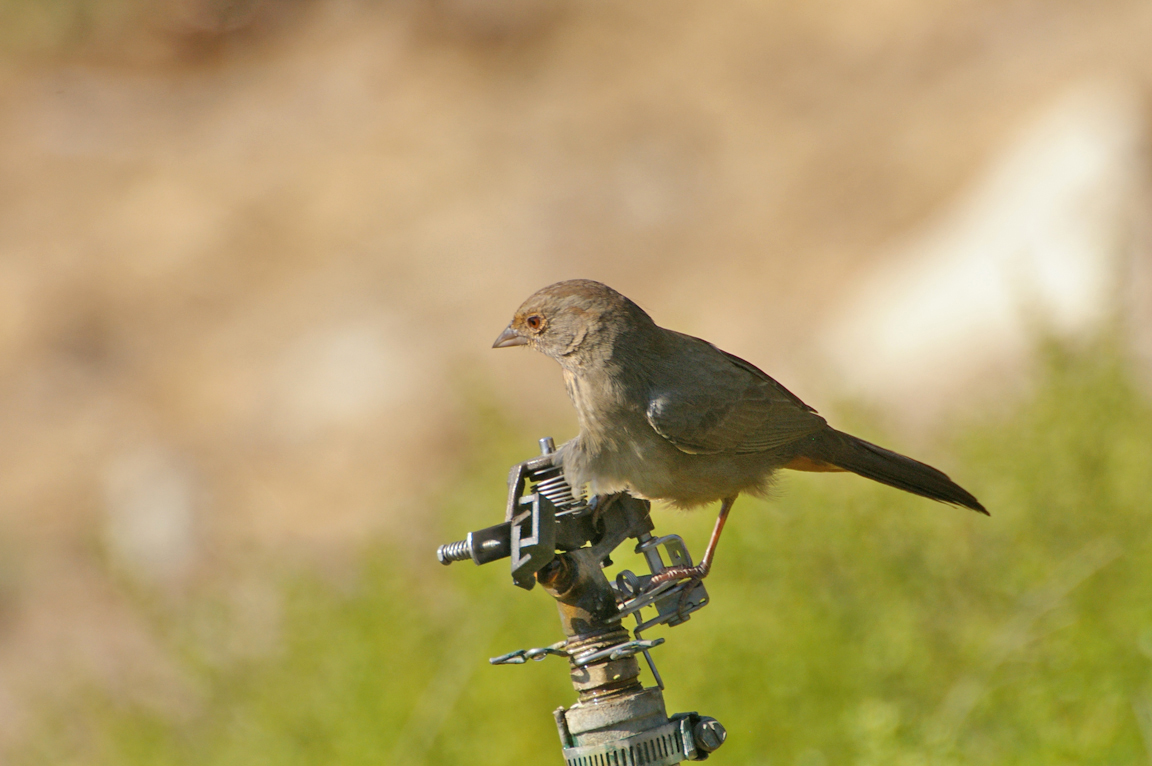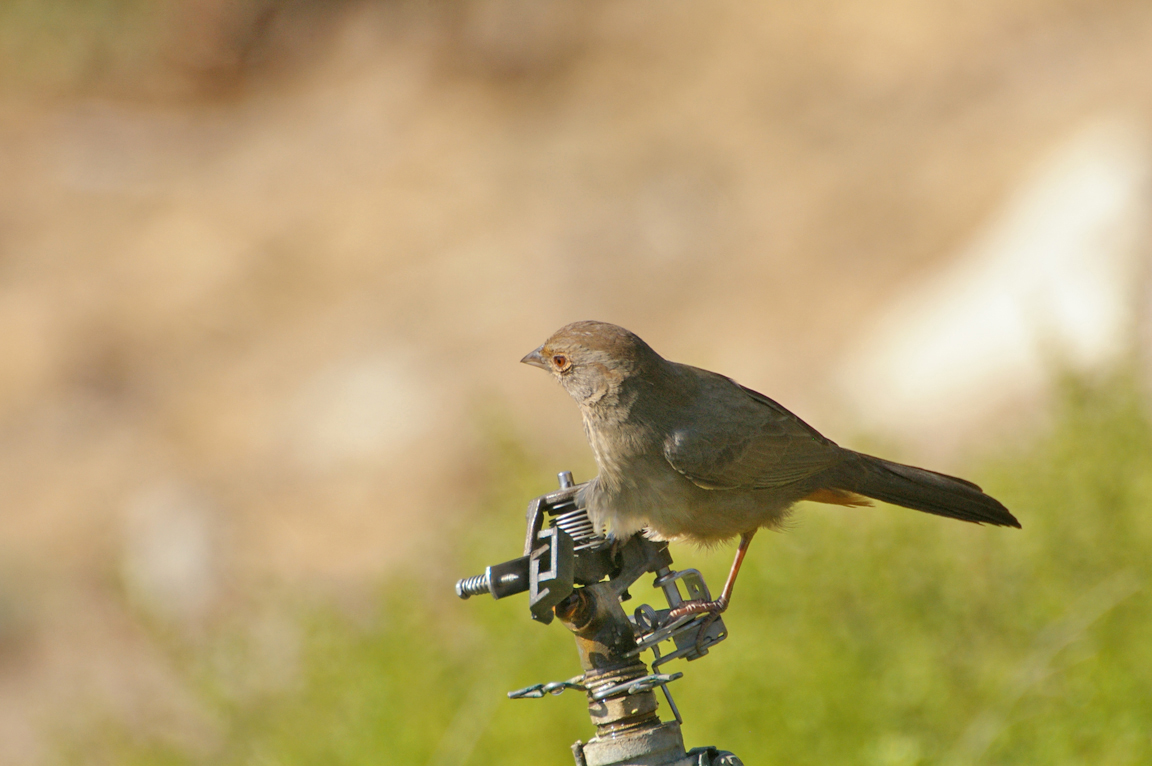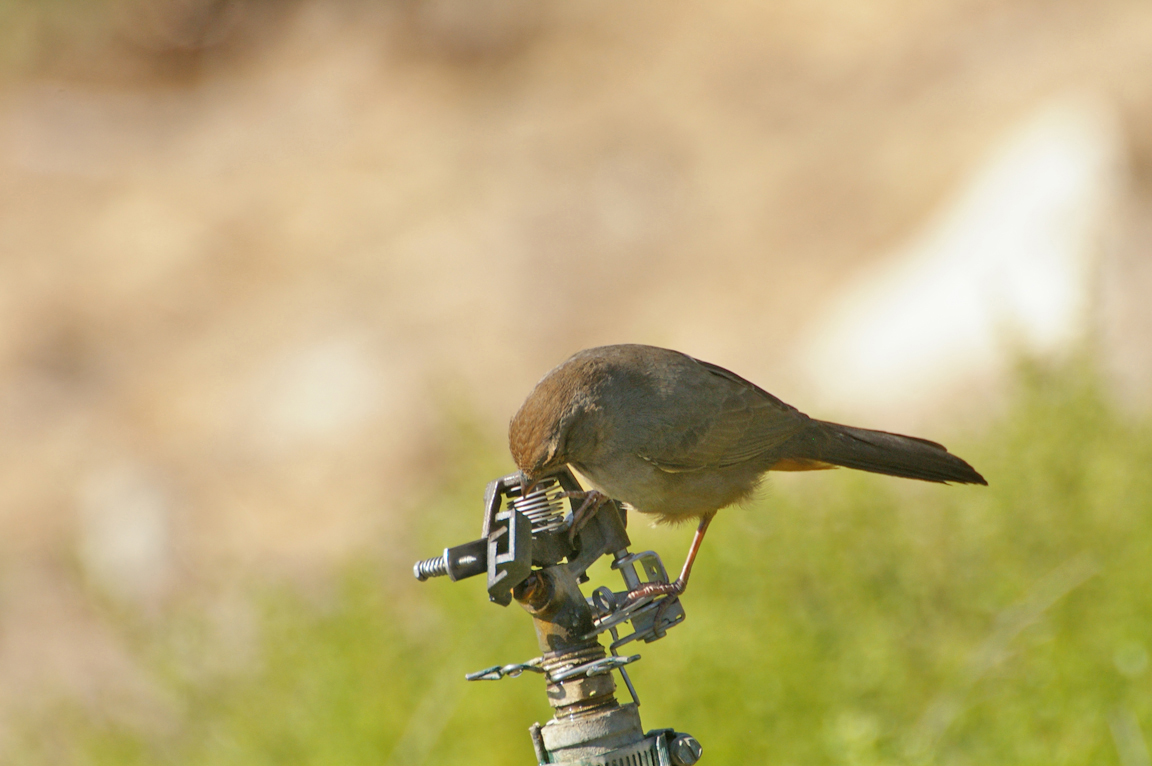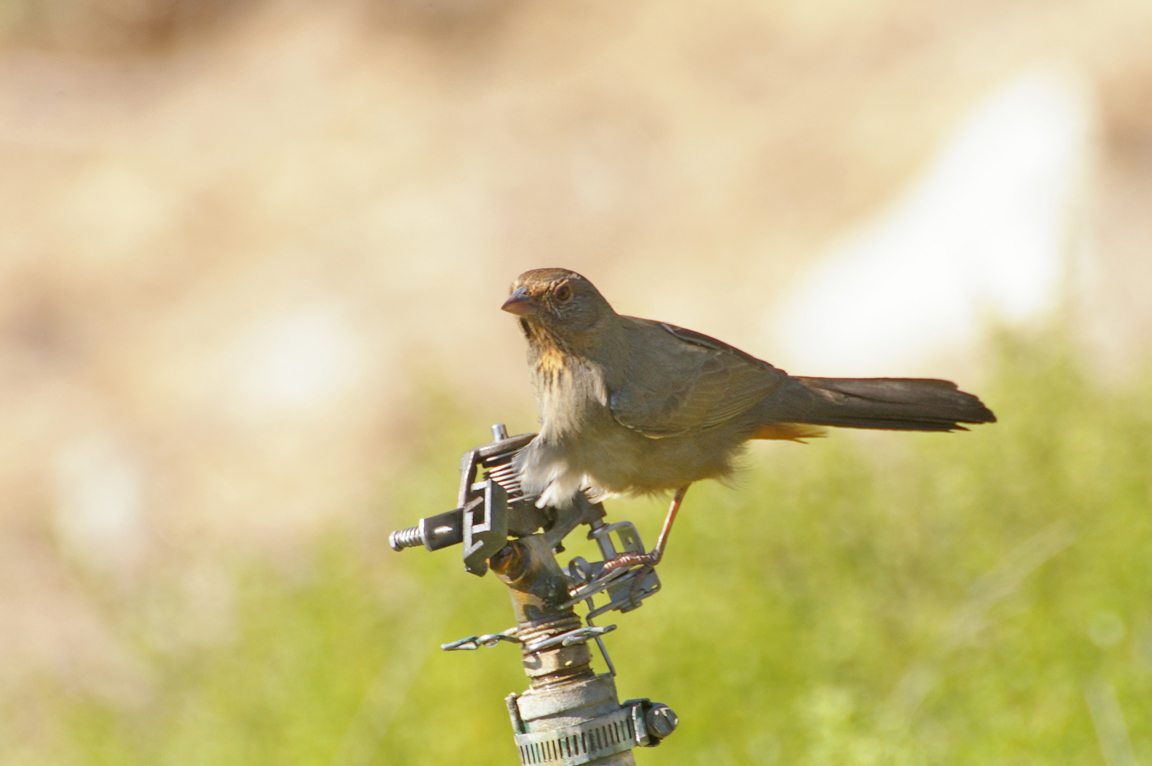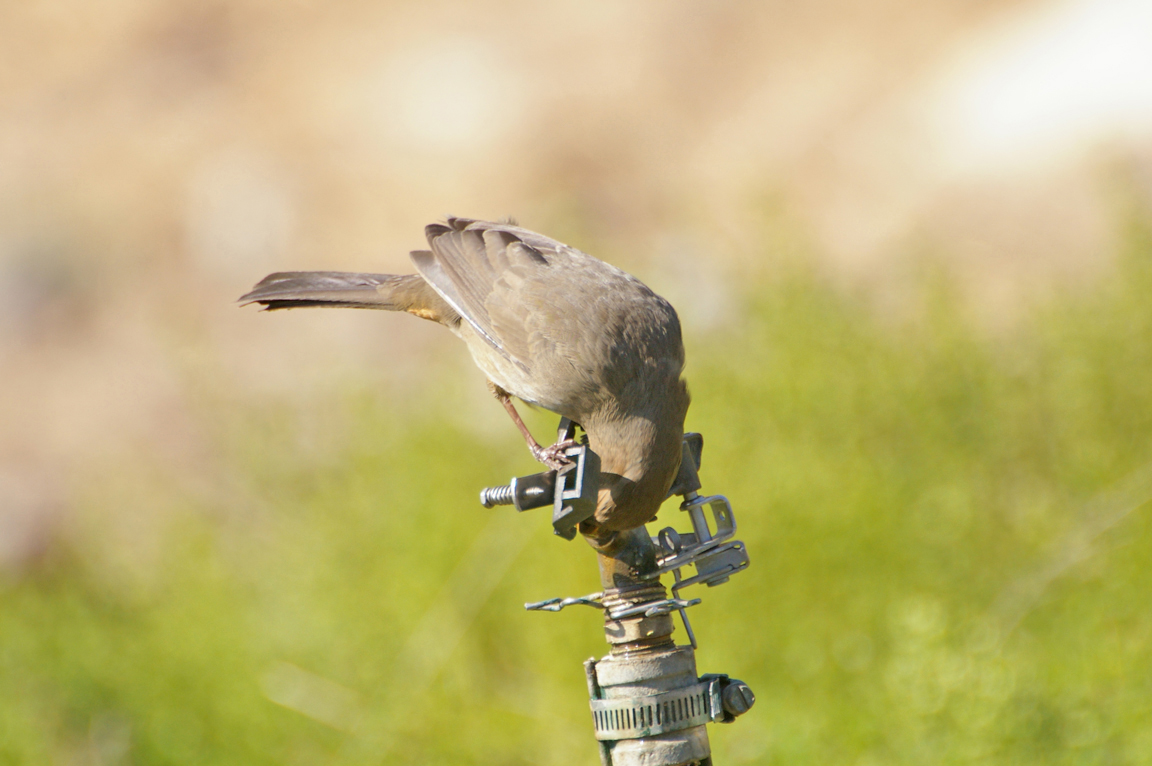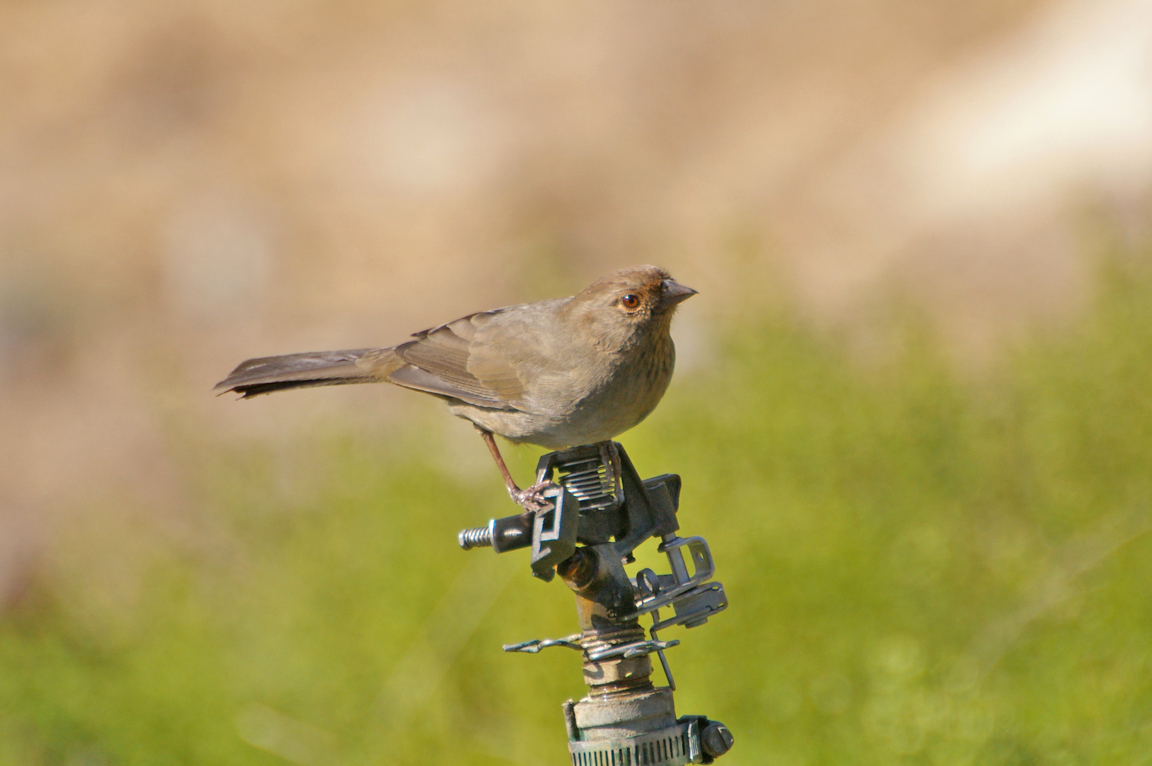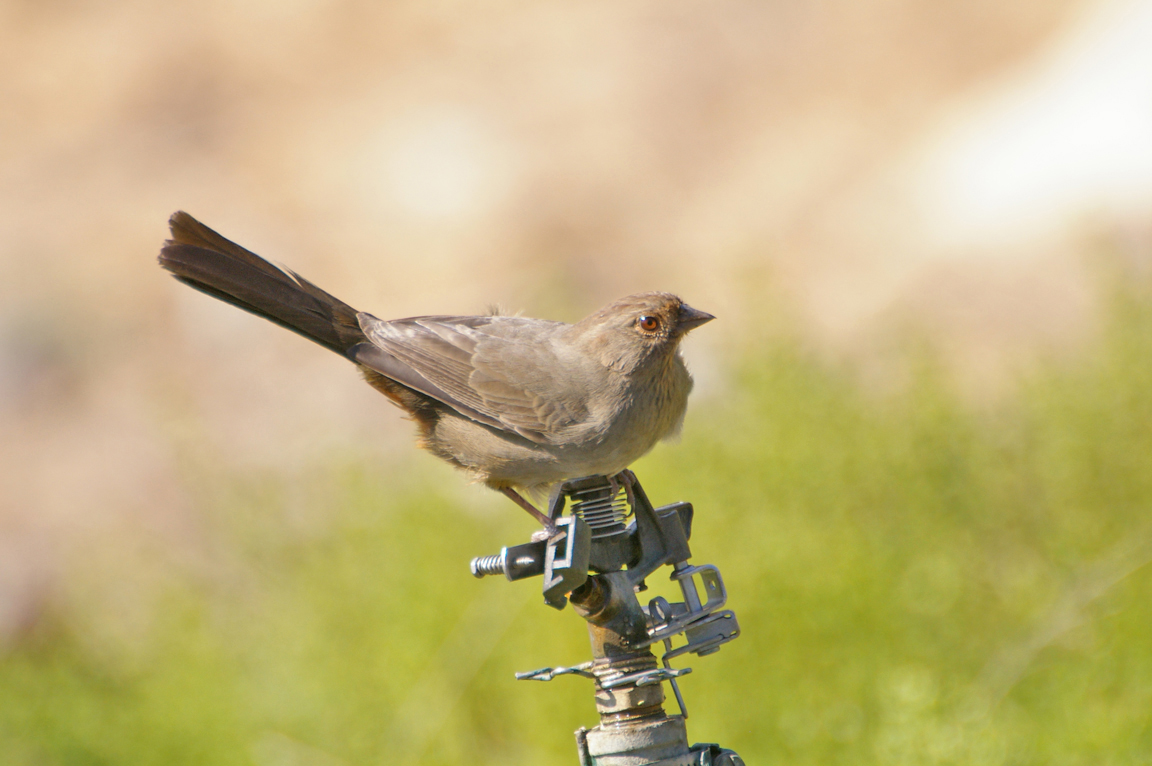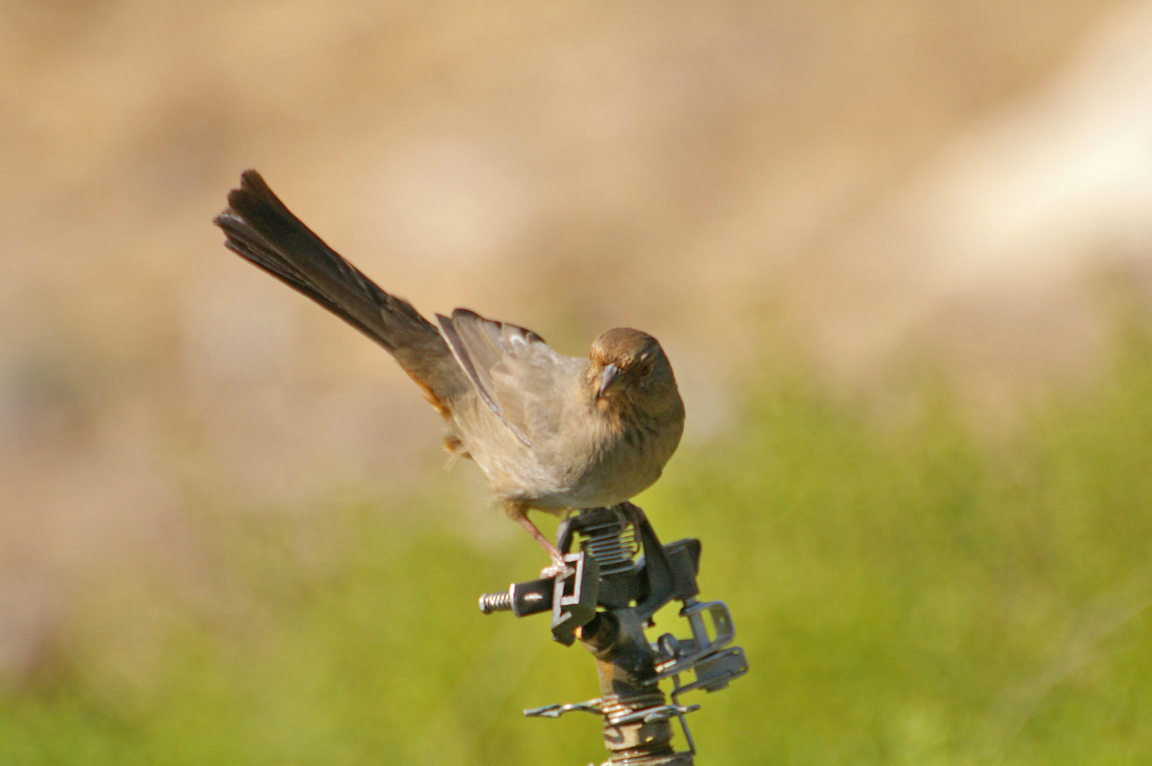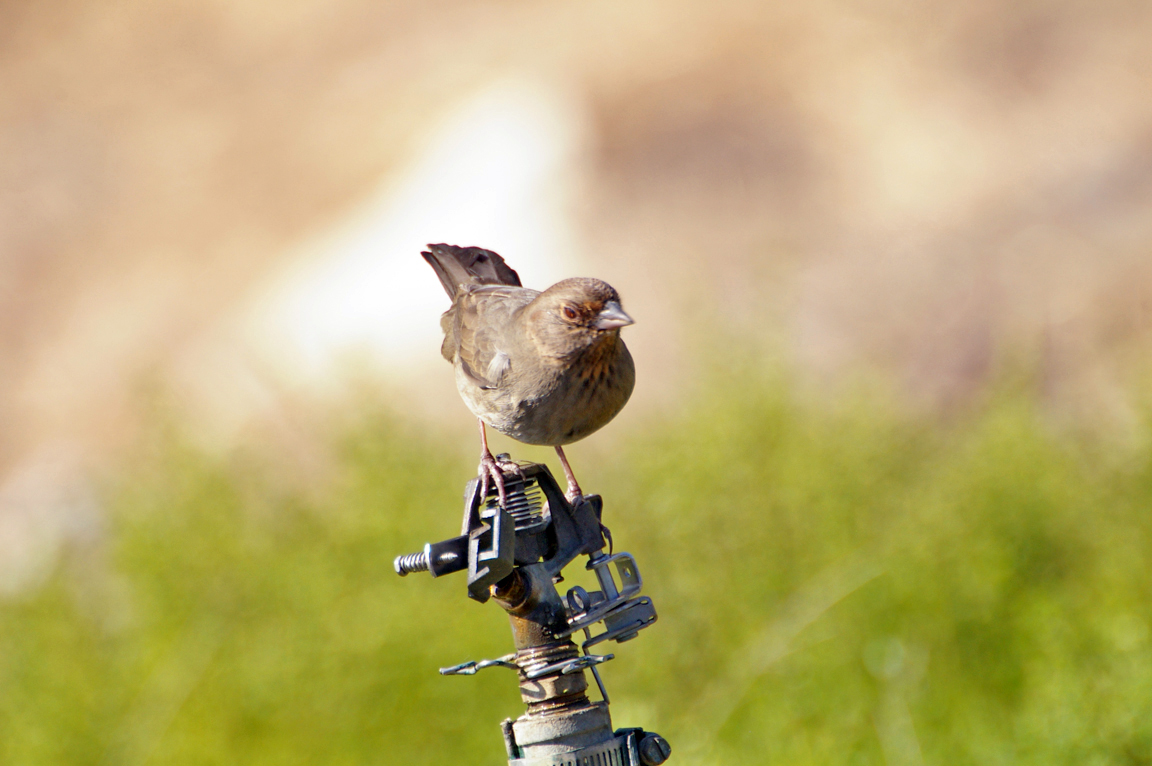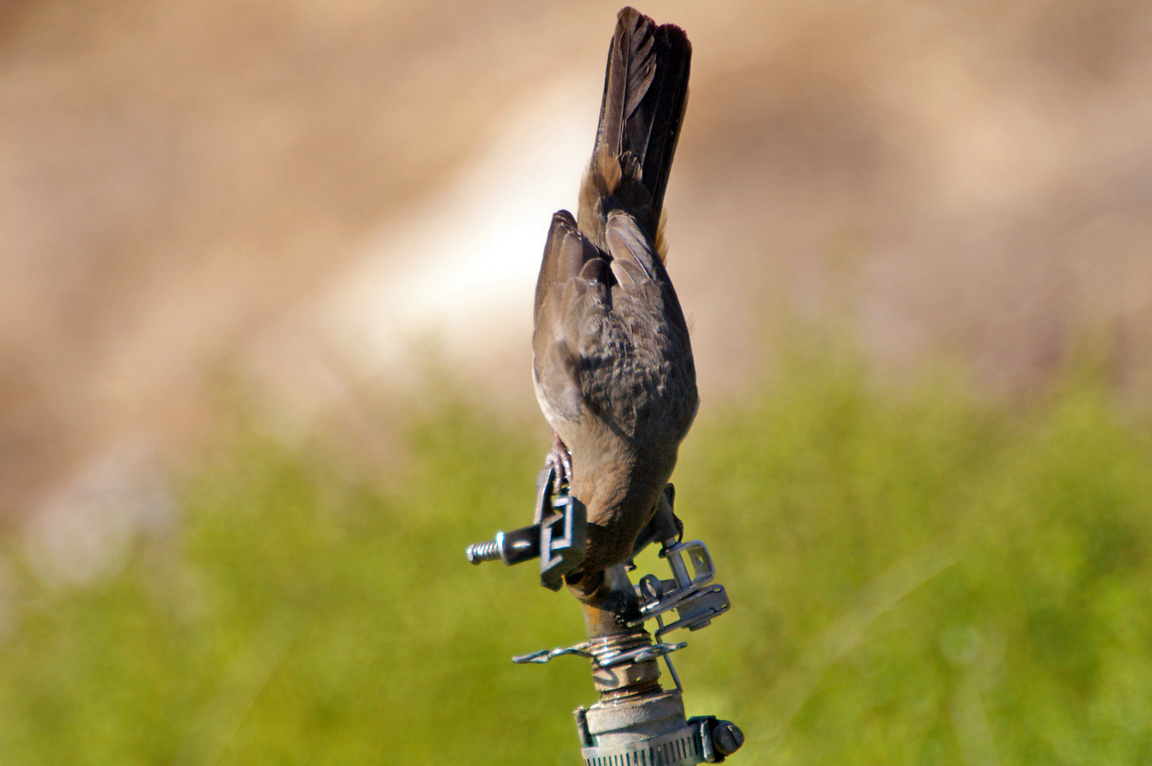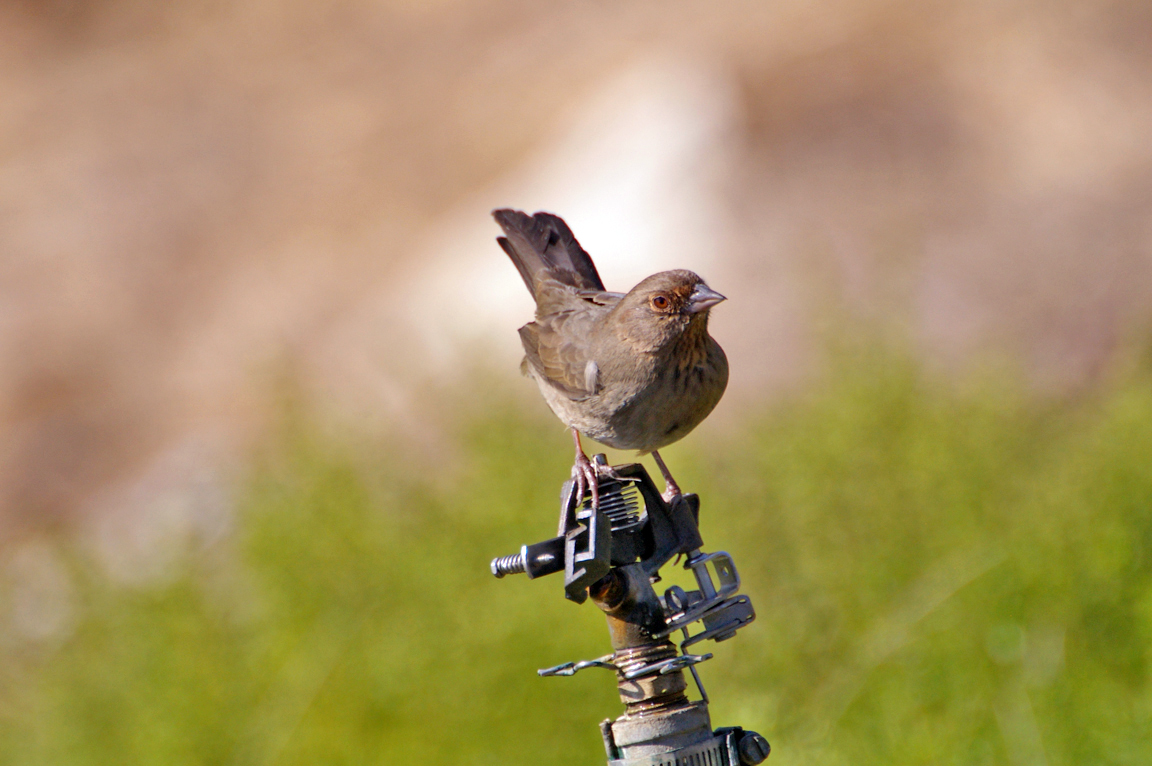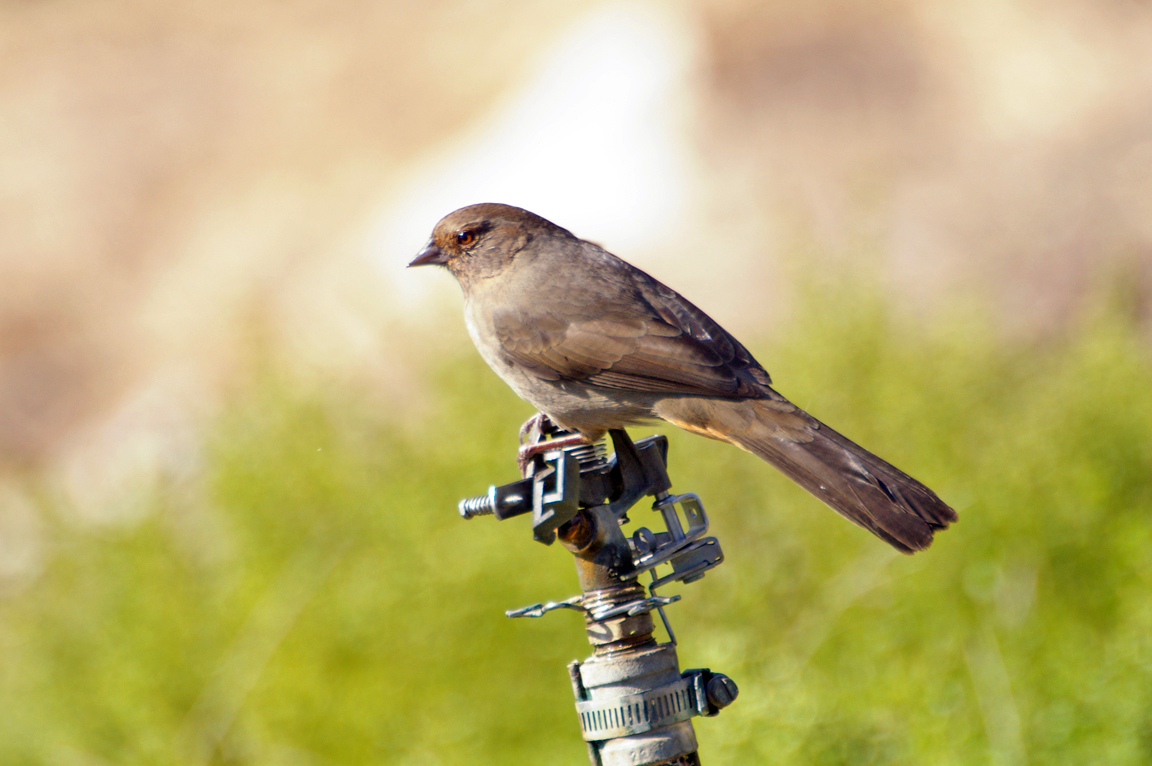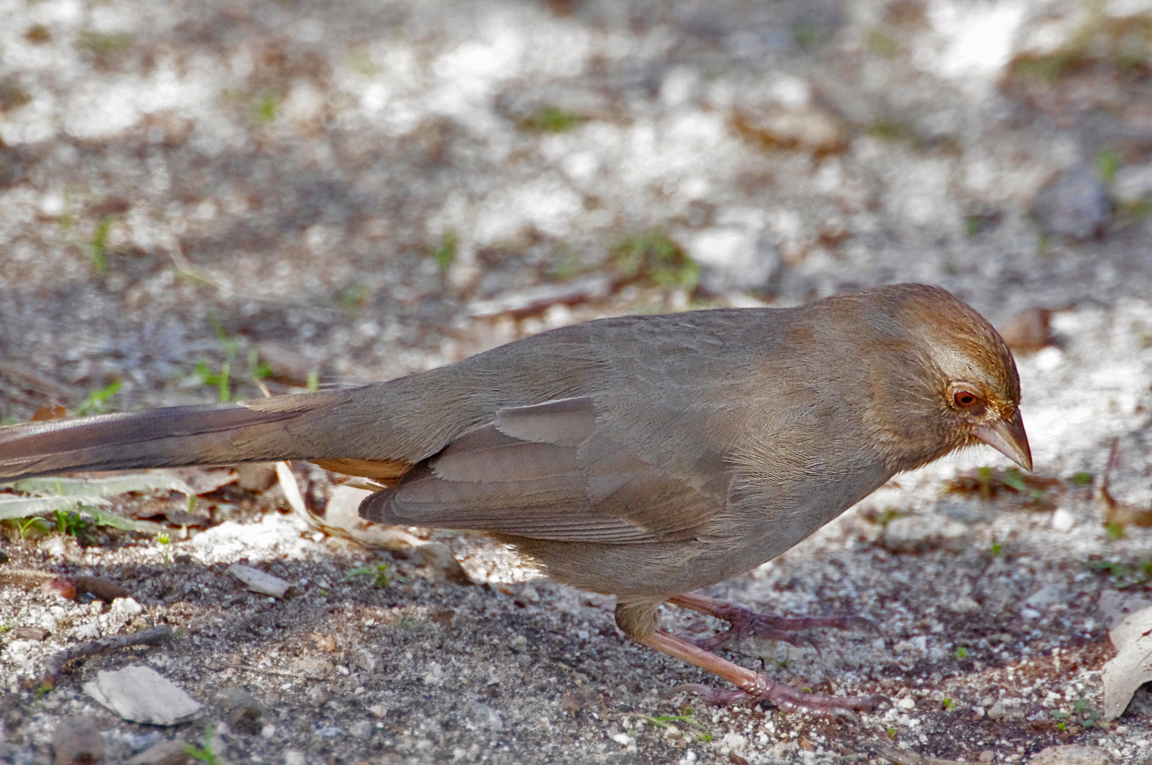|
|
|
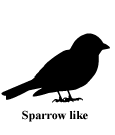 |
California Towhee
|
| Pipilo crissalis | |
Your first encounter with a California Towhee may be prompted by a tireless knocking at your window or car mirror: these common backyard birds habitually challenge their reflections. But California Towhees are at heart birds of the tangled chaparral and other hot scrublands of California and Oregon. You're as likely to hear their bright chip notes along a secluded trail as on your way out your front door. If you live in the Southwest, look for this bird's twin, the Canyon Towhee.
Interesting Information
-
Taxonomists used to consider the California Towhee and the almost identical Canyon Towhee the same species, the Brown Towhee. The Abert's Towhee looks quite different from these two species, but evidence suggests it may actually be the California Towhee's closest relative, rather than the Canyon Towhee.
-
Poison oak is one of the hazards of outdoor recreation in California. It lines trails and covers hillsides, seemingly lying in wait to inflict its itchy, weeping rash on the unwary. But it's also an integral part of the landscape and part of the daily life of California Towhees. Many towhees build their nests in poison oak and feast on the plant's copious crops of pale white berries.
-
The Inyo California Towhee is restricted to riparian habitat in the Argus Mountains of central California. It is threatened by the destruction of the habitat, largely the result of foraging by feral burros.
-
The oldest known California Towhee was 12 years, 10 months old.
Description
Adult Description
Size & Shape
California Towhees are essentially large sparrows, with a sparrow's short, rounded wings, long tail, and thick, seed-cracking beak - but towhees are larger and bulkier. The long tail and short wings can give this bird an ungainly look in flight.
-
Length Range: 23 cm (9 in)
-
Weight: 54 g (1.9 oz)
-
Size: Medium (9 - 16 in)
Color Pattern
Few birds are as uniformly matte brown as a California Towhee. A patch under the tail (called the crissum, giving the bird its scientific name) is a noticeably warmer ruddy brown. Males look the same as females.
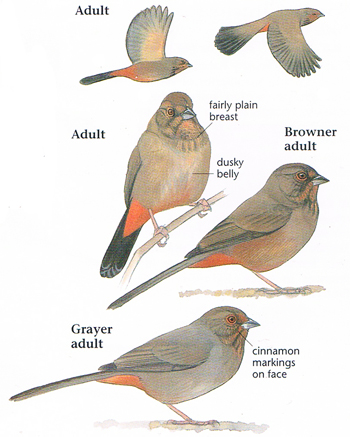
Photo taken from: The Sibley Field Guide by David Allen Sibley
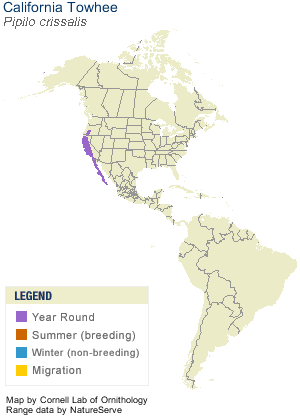
© 2003 Cornell Lab of Ornithology
|
Habitat |
|
California Towhees are birds of the dense chaparral scrub that lines coastal slopes and foothills of California and southern Oregon. They also occur along streams and canyon bottoms adjacent to desert slopes, where they live amid manzanita, buckthorn, madrone, foothill pines, and a variety of oaks. As cities and suburbs sprang up in California, towhees moved right in to shrubby backyards and city parks. |
|
Behavior |
|
Look for California Towhees doing the classic towhee foraging maneuver, the double-scratch. When feeding on the ground, these birds look under leaves by lunging forward and then quickly hopping backward, scratching at the ground with both feet as they go. After one of these moves, the bird is poised to pounce on any food it sees. To eat grass seeds, towhees may also hold onto a stem and strip seeds off all at once with the beak. |
|
Food |
|
California Towhees eat mostly seeds from many kinds of grasses and herbs, supplemented with insects (mostly beetles and grasshoppers) during the breeding season. They also eat berries such as elderberry, coffeeberry, and poison oak, acorns, and garden produce like peas, plums, and apricots. May also eat spiders, millipedes, and snails. Eats millet, among other seeds, at feeders. |
Taxonomy
| Kingdom: | Animalia |
| Phylum: | Chordata |
| Subphylum: | Vertebrata |
| Class: | Aves |
| Order: | Passeriformes |
| Family: | Emberizidae |
| Genus: | Pipilo |
| Species: | Pipilo crissalis |
| Subspecies: | Pipilo crissalis albigula |
| Pipilo crissalis aripolius | |
| Pipilo crissalis bullatus | |
| Pipilo crissalis carolae | |
| Pipilo crissalis crissalis | |
| Pipilo crissalis eremophilus | |
| Pipilo crissalis petulans | |
| Pipilo crissalis senicula |
Similar Species |
|
Canyon and Abert's towhees are similar, but they are birds of the inland Southwest; they don't occur in the California Towhee's range. Abert's Towhee is warmer brown, with black around the beak. California Thrashers have the same overall color (even the warm brown under the tail) but they have a longer tail and a strongly downcurved beak. Juvenile Spotted Towhees are streaky rather than plain, and lack the California's warm brown under the tail and at the throat. |
|
Bird Sound |
|
The song is given only by male California Towhees and is made up of repetitions of the bird's metallic chip note. Songs typically start with a few well-spaced notes that rapidly accelerate into a trill and then stop abruptly. The whole song typically lasts 1-2 seconds. |
|
Eggs look like this |
|
Photo taken from: ARCTOS Collaborative Collection Management Solution |
